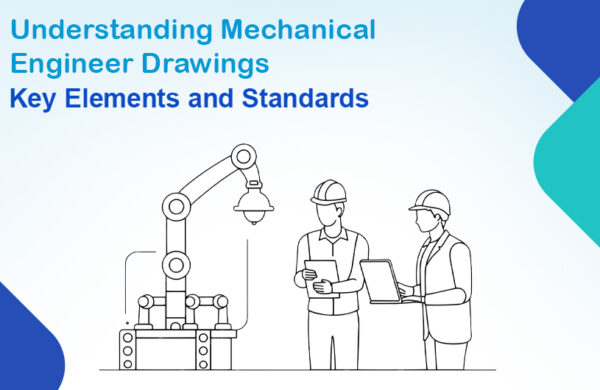Reverse engineering, also termed as back engineering, is a procedure in which machines, software, architectural structures, and other objects are deconstructed to extract the information about their design. It involves the deconstruction of individual components of larger products. This process largely determines the designing of the parts of a machine to recreate them. This approach is used by companies and manufacturers when the replacement of any part of a machine from its original equipment manufacturer is impossible.
The reason behind the name reverse engineering is that it involves working backward through the original process implemented while designing. It is often challenging to gain a working knowledge of the original design by disassembling the product as there are frequent cases where the knowledge about the methods that went into manufacturing the product is insufficient for designing.
There are various reasons for performing reverse engineering in different fields. However, it is merely an analysis for the deduction of design features from the products with inadequate knowledge of the procedures which went into the production of the original product. The process of reverse engineering can be applied to computer software and hardware, physical machines, military technologies and to understand biological functions related to the working of genes.
Purpose of Reverse Engineering
Reverse engineering helps the manufacturers to extract information about the design and function of the components or pieces of any object or system. If the process is successful then reverse engineering provides a virtual copy of the model that went into the original design.
Reverse engineering is undoubtedly the best way for the recreation of the designs for the objects that went out of the production decades. In the cases where the original blueprints are lost or damaged, reverse engineering can be helpful in bringing those objects into existence. If it is possible to obtain the working model of an outdated product, then it is easier to trace the steps implemented for its design and can be used to construct a new model or repair any part of the original model.
How Does Reverse Engineering Work?
The reverse engineering process is concerned with the specific object on which it is to be performed. But, in general, the steps discussed below are common to the process performed on any object irrespective of its specialization. The steps include:
Information extraction – First, the concerned object, which is to be reverse engineered, is studied and its information is extracted including the details about its design. The extracted information is studied to get a clear picture of how the components or pieces of the object fit together. In the case of software reverse engineering, it is required to gather the source code and design documents related to the software to study. Some tools like disassemblers may also be required to break the program apart into its constituent components.
Modeling – The information collected is then used to abstract a model based on the concepts implemented, with each component of the model explaining its significance and functionality in the object. This step is mainly performed to construct a general model of the object which can be used later to seek any guidance for designing new objects or systems. In the case of software reverse engineering, this process may take the form of a flow or structure chart.
Review and Testing – This step involves reviewing and testing so as to ensure that it is the real abstraction of the original system or object. In the case of software reverse engineering, it is termed software testing. Once the testing is done, the model constructed can be used to reengineer the original system or object.
Applications of Reverse Engineering
Parts replacement – Parts replacement is one of the most common uses of reverse engineering, involving the examination and reproduction of any specific part of the larger machines or systems to maintain their operating status.
Repairing of parts – If any part or component of the original object does not support or needs to be repaired, the knowledge of the working of the project can be useful here. If there are no design documents available, the manufacturer may implement reverse engineering to create the design documents. The data obtained from this can be helpful in determining the components that need to be replaced.
Failure analysis – Reverse engineering techniques can be implemented greatly in failure analysis. A product can be examined using reverse engineering to reveal the damaged parts of a faulty design. Flaws can also be detected with the help of digital design files created through reverse engineering and can help in repairing a piece of equipment.
Parts improvement – Reverse engineering can also be implemented to improve the parts or components of a machine. A part or component may require to be altered after conducting a machine’s failure analysis. If there are no alternative parts available in the market, reverse engineering technology can be implemented to create a copy of the original design. Sometimes machines require stronger joints or machine reinforcements. The faulty parts can be examined for their measurements and redesigned with stronger metals.
It can be said that reverse engineering is very advantageous for the construction and manufacturing industries. You can select Monarch Innovations as your first preference for 3D reverse engineering services. Monarch Innovation has highly skilled project team members who are experts in their fields and have outstanding experience across a variety of disciplines making the use of the latest prototyping technologies. Monarch Innovation uses 3D scanning measurement solutions to implement reverse engineering for the development of CAD models and manufacturing drawings, consumer goods, power generation, heavy engineering, aerospace industries, and so on.





